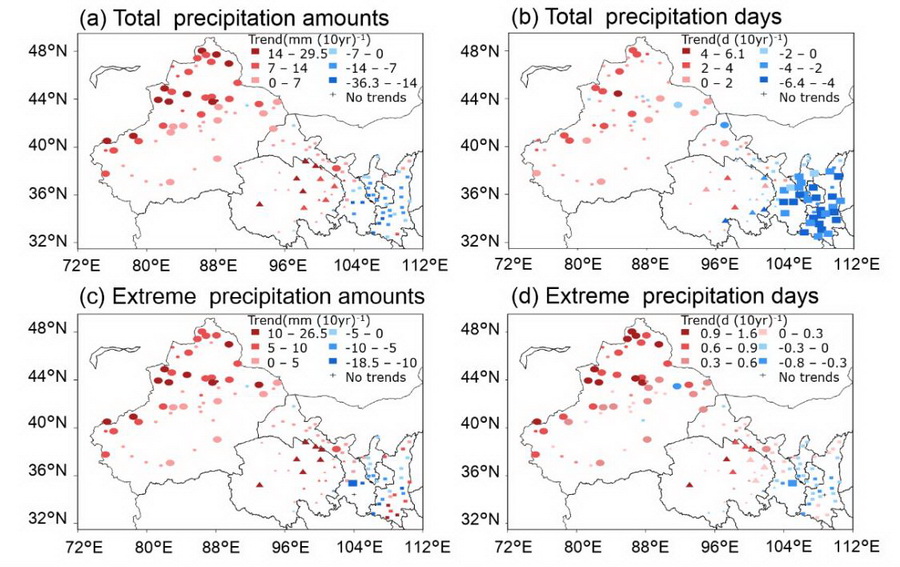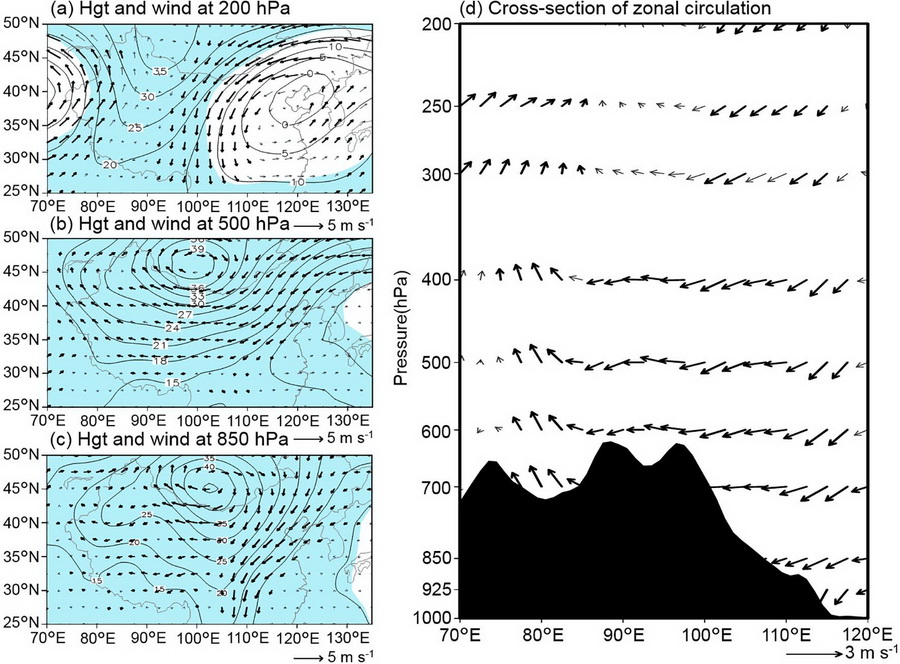
Chinese researchers recently found that extreme precipitation events (EPE) increased significantly in the westerly and alpine regions, but decreased insignificantly in the monsoon region across China in recent years.
Supervised by Prof. HU Zeyong, doctoral student LU Shan from the Northwest Institute of Eco-Environment and Resources of the Chinese Academy of Sciences (CAS) has investigated variability in extreme precipitation during 1961-2016 in different climate zones of Northwest China and possible mechanisms for this variation.
Their new findings have been published in Advances in Atmospheric Sciences.
Due to different weather systems and topography, much of northwest China is arid compared to the southeast coast of China. Although EPEs are rare in this region, short duration, high intensity, and localized heavy rainfall can cause natural disasters. Mountain torrents or a combination of large-scale sliding floodwater and mud, as well as landslides have resulted from EPE.
In recent years, EPE occurrences in Northwest China have increased, causing more serious disasters and disrupting the fragile ecosystem of the arid biome. To understand what is driving more frequent extreme precipitation in Northwest China, scientists broke down several key atmospheric components, hoping to find the source of change.
According to the researchers, EPE have been the most significant contributor to the total precipitation in Northwest China. Within the arid region, the westerly and plateau zones have seen the most impactful EPE increase. Regarding seasonal effects, EPE have started earlier, and the last annual event is trending later. At the same time, they observed the opposite phenomenon in the monsoon regions of Southeast China.
Results indicate that summer atmospheric circulation, water vapor transport, and atmospheric instability over Northwest China varies greatly throughout the decades analyzed in the study. However, an abrupt increase in EPE is apparent just before and consistently after 1986. Conversely, the conditions in the monsoon zone suppress summer EPE development and occurrence after 1986.
In addition, the summer water vapor and atmospheric instability increased in the westerly zone and plateau zone. These characteristics created favorable conditions for increased occurrences of extreme precipitation in the westerly zone and plateau zone in summer.
Conversely, the upper-level convergence and lower-level divergence in the monsoon zone strengthened descending flow. Decreases in summer water vapor and atmospheric instability occurred in the monsoon zone after 1986. Hence, the environmental conditions in the monsoon zone may have prevented the occurrence and development of extreme precipitation in summer during 1986-2016.
Future studies may need to focus on the influence of topography on EPE. Additionally, strengthening ecological protection and enhancing disaster prevention and awareness are the best measures to effectively deal with the adverse effects of environmental change.
This research was supported by the Second Tibetan Plateau Scientific Expedition and Research Program, the Strategic Priority Research Program of CAS, the National Natural Science Foundation of China, and the National Key Research and Development Program of China.

Fig. 1. Time series of annual precipitation amounts (a) and days (b) in northwest China, the contribution rate of extreme precipitation amounts to total precipitation amounts (c), and the contribution rate of extreme precipitation days to total precipitation days (d). (Image by HU Zeyong)

Fig. 2. Spatial distribution of the trends for total precipitation (a, b) and EPE (c, d) in northwest China. (Image by HU Zeyong)

Fig. 3. Height and horizontal wind at 200 hPa (a), 500 hPa (b), and 850 hPa(c) and height longitude cross-section of JJA zonal circulation averaged over 34°–40°N for the differences between the periods 1986–2016 and 1961–85. (Image by HU Zeyong)

86-10-68597521 (day)
86-10-68597289 (night)

52 Sanlihe Rd., Xicheng District,
Beijing, China (100864)

